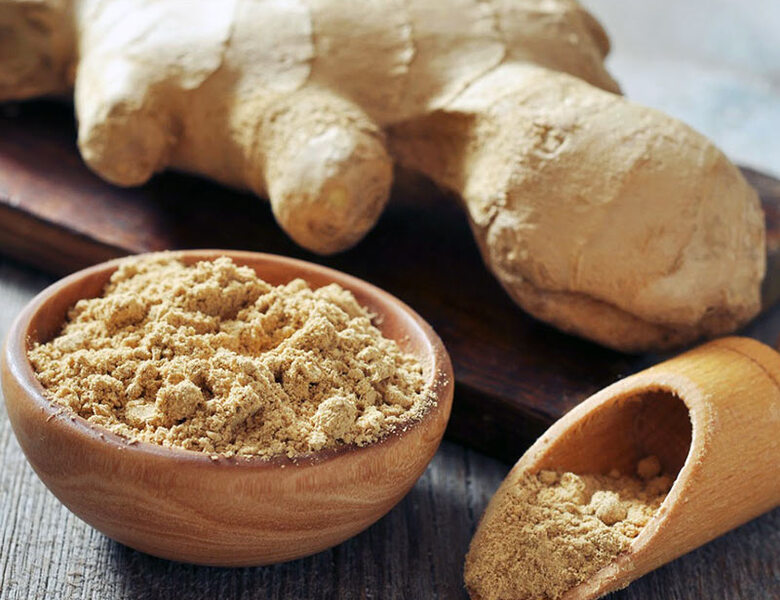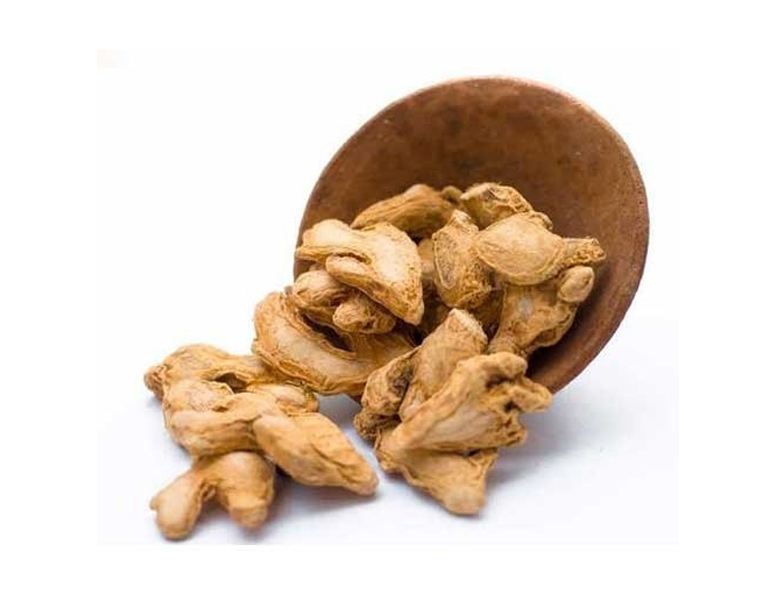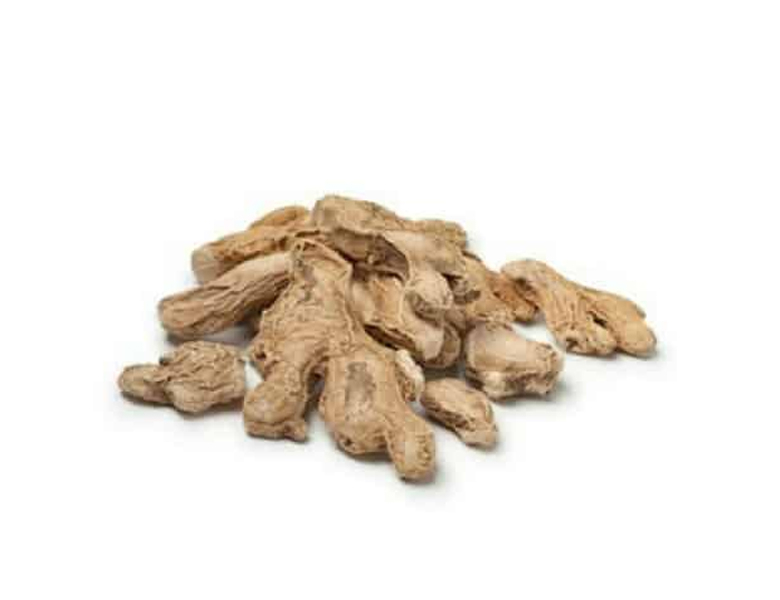Although often called “ginger root” it is actually a rhizome. It is available in various forms, the most common of which are as follows:
Whole raw roots are generally referred to as fresh ginger. A piece of the rhizome, called a ‘hand’. It has a pale yellow interior and a skin varying in colour from brown to off-white. Jamaican ginger, which is pale buff, is regarded as the best variety. African and Indian ginger is darker skinned and generally inferior, with the exception of Kenya ginger. Whole fresh roots provide the freshest taste. The roots are collected and shipped when they are still immature, the outer skin is a light green colour. These can sometimes be found in Oriental markets.
Dried roots are sold either ‘black’ with the root skin left on, or ‘white’ with the skin peeled off. The dried root is available whole or sliced.
Powdered ginger is the buff-coloured ground spice made from dried root.
Preserved or ‘stem’ ginger is made from fresh young roots, peeled and sliced, then cooked in a heavy sugar syrup. The ginger pieces and syrup are canned together. They are soft and pulpy, but extremely hot and spicy.
Crystallized ginger is also cooked in sugar syrup, then air dried and rolled in sugar.
Pickled ginger has the root sliced paper-thin and pickled in a vinegar solution. This pickle is known in Japan as gari , which often accompanies sushi, and is served to refresh the palate between courses.
Bouquet: warm, sweet and pungent.
Flavour: Fiery and pungent
Heat Scale: 7





